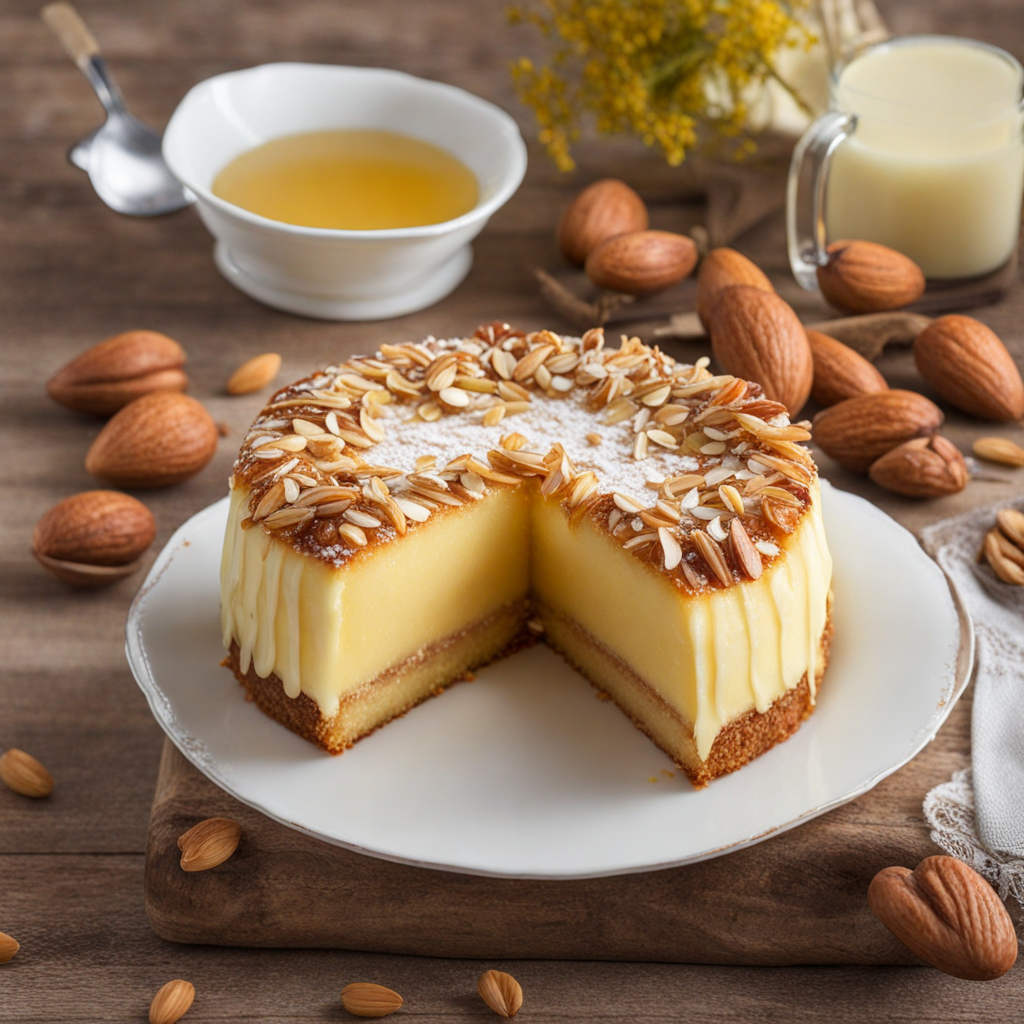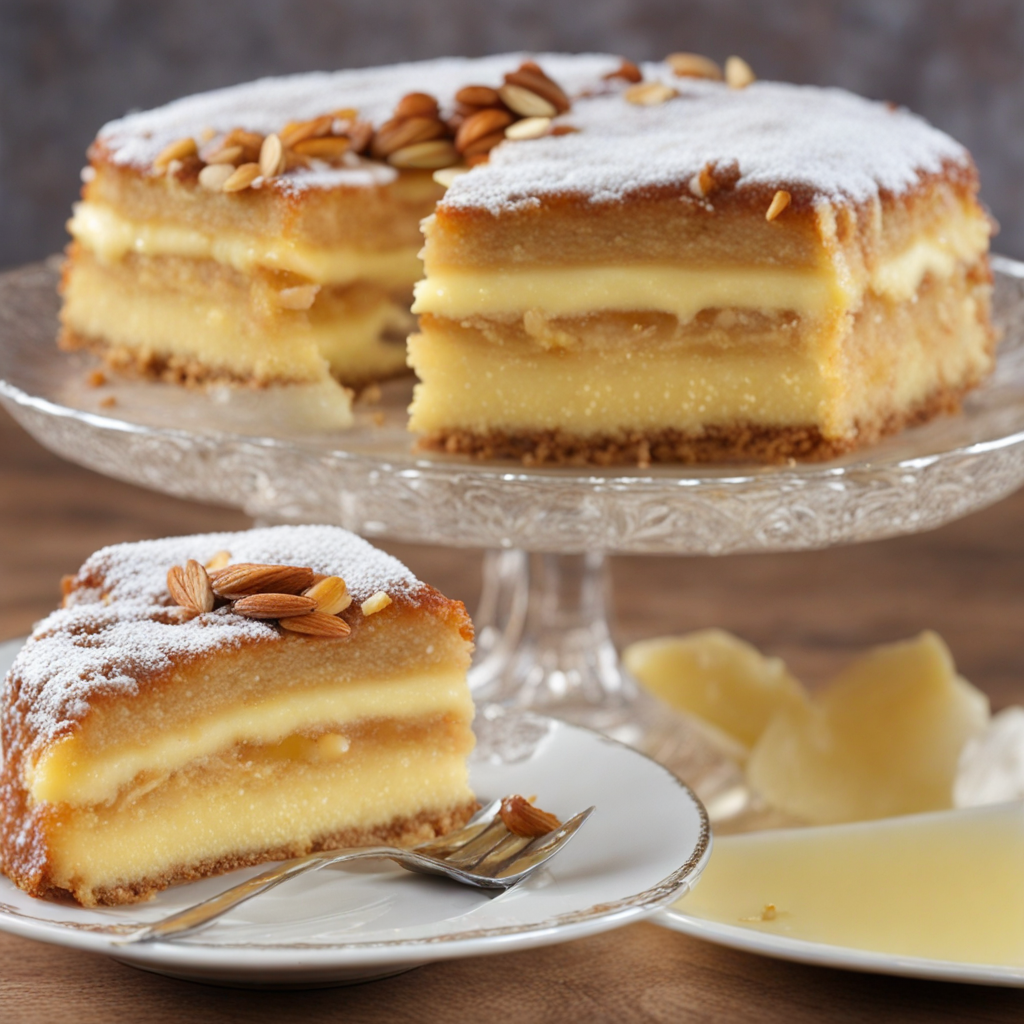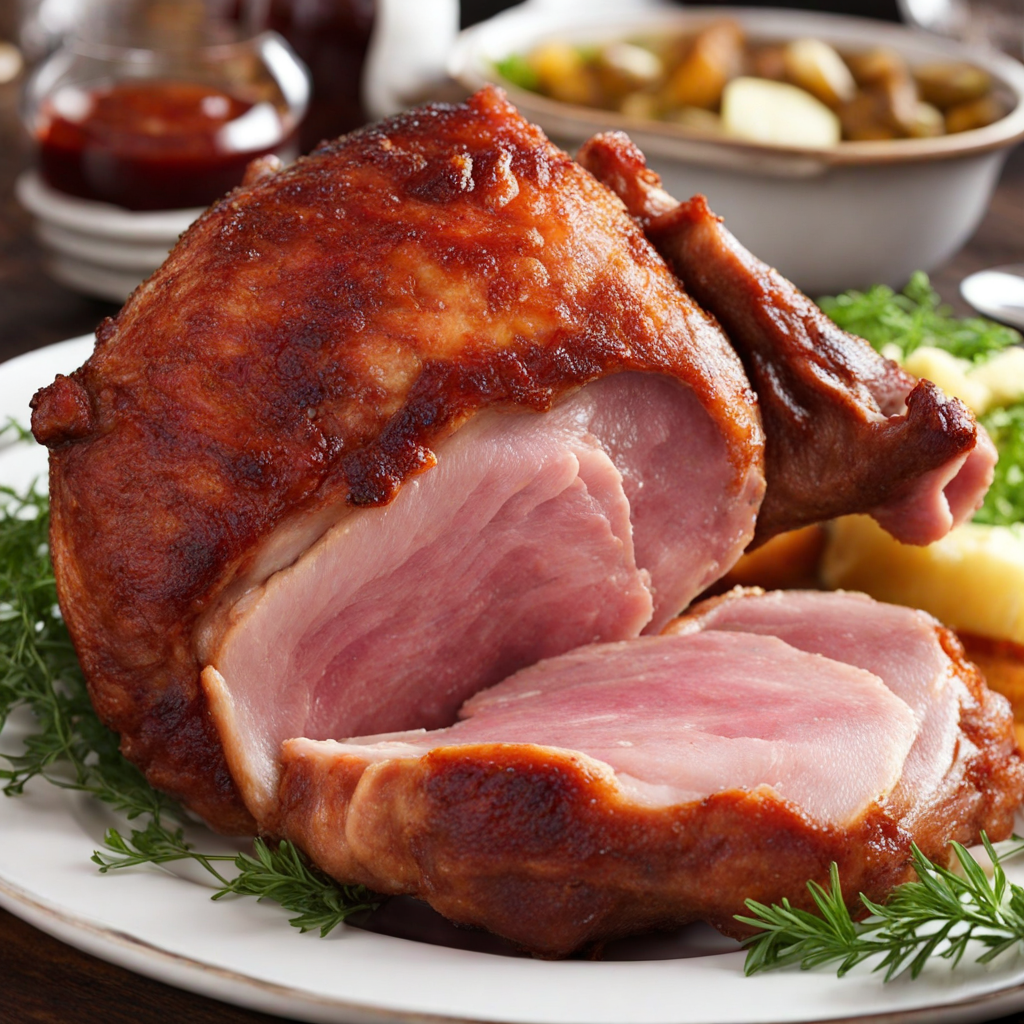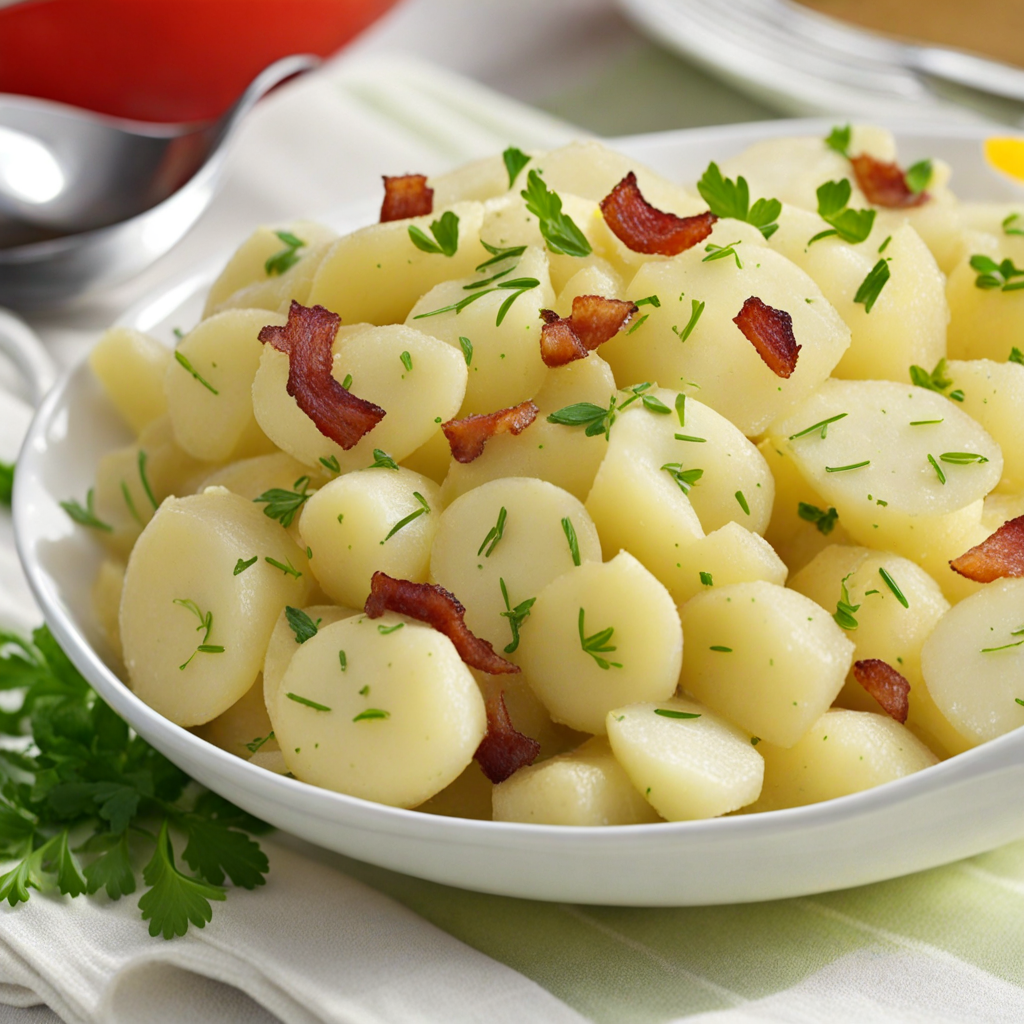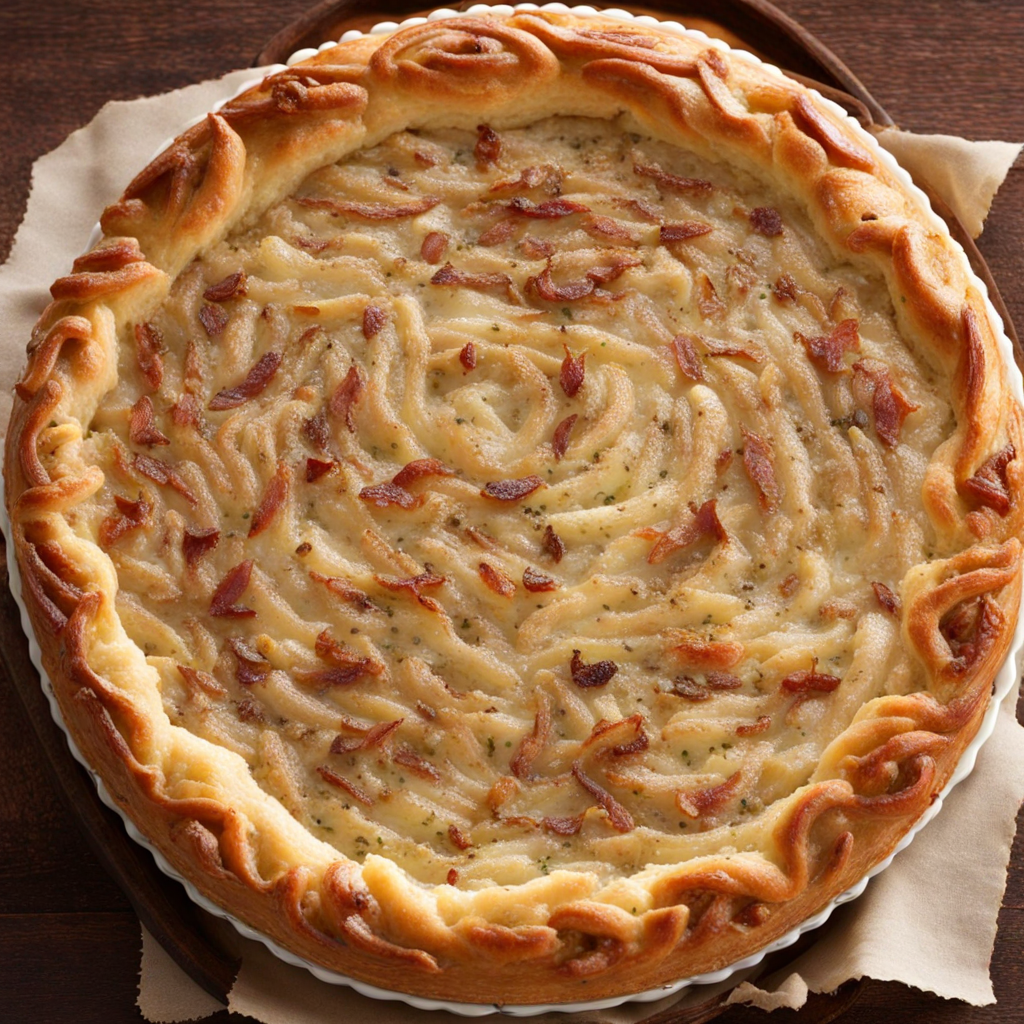Bienenstich
Bienenstich, or "Bee Sting Cake," is a delightful German dessert that captivates the senses with its rich flavors and unique texture. This traditional cake features a soft, buttery yeast dough that serves as the foundation, providing a light and airy bite. The dough is often infused with a hint of vanilla or lemon zest, adding a subtle aromatic quality that complements the other elements. Once baked, the cake is sliced in half, creating a perfect canvas for a luscious filling. The star of Bienenstich is undoubtedly its creamy filling, typically made from a blend of vanilla custard or pastry cream, which is both smooth and indulgent. This custard is layered generously between the two halves of the cake, creating a delightful contrast to the slightly chewy crust. To elevate the experience, the cake is often topped with a caramelized almond topping that adds a satisfying crunch and a nutty flavor, evoking the taste of honey, which is reminiscent of the cake's name. As you take your first bite of Bienenstich, you'll experience a harmonious blend of textures and flavors that is truly enchanting. The sweetness of the caramelized almonds balances beautifully with the creamy custard, while the soft cake provides a comforting base. This dessert is not only a treat for the palate but also a feast for the eyes, often adorned with a glossy sheen from the caramel and a sprinkle of toasted almonds. Perfect for celebrations or as a delightful afternoon snack, Bienenstich invites you to savor a slice of German culinary tradition that will leave a lasting impression.
How It Became This Dish
Bienenstich: The Sweet Legacy of German Culinary Tradition Bienenstich, or "Bee Sting Cake," is a beloved dessert that hails from Germany, characterized by its rich combination of buttery yeast dough, creamy custard filling, and a crunchy caramelized almond topping. The cake's name, which translates to "bee sting," is steeped in folklore and serves as a sweet reminder of the interplay between nature and culinary tradition. Let’s delve into the origins, cultural significance, and the evolution of this delectable treat. #### Origins: A Cake Born of Legend The exact origins of Bienenstich are somewhat obscured in the mists of time, but it is generally accepted that this cake emerged from the German-speaking regions of Europe in the early 19th century. One popular legend suggests that the cake was created in the small town of Aachen around 1850. According to this tale, a group of bakers devised the cake to celebrate the arrival of a local prince, who was known to have a fondness for sweets. As the story goes, the bakers were stung by bees while attempting to gather honey for the cake, leading to its whimsical name. Another story attributes its creation to the German city of Siegen, where bakers reportedly invented the cake as a protective measure to keep bees away from their honey supplies. Whichever tale you prefer, both highlight the cake’s deep-rooted connection to local traditions and the agricultural practices of beekeeping, which has long been an essential part of rural life in Germany. #### Cultural Significance: A Symbol of Community and Celebration Bienenstich is more than just a dessert; it symbolizes community, celebration, and the joys of togetherness. Traditionally served at weddings, birthdays, and other festive occasions, the cake has become a staple in German bakeries and homes alike. Its rich flavors and inviting textures make it a favorite among both young and old. In the context of German culture, Bienenstich also reflects the country's deep appreciation for seasonal ingredients and artisanal baking. Honey, a key component of the cake, has been used in German cooking for centuries, not just for its sweetness but also for its medicinal properties. Bees and beekeeping have played significant roles in German folklore, often depicted as symbols of hard work and community. Over the years, Bienenstich has transcended its regional roots, becoming a beloved dessert throughout the German-speaking world, and even finding its way to international menus. Its unique blend of flavors and textures resonates with many, making it a delightful choice for celebrations beyond its homeland. #### Development Over Time: Evolution of Ingredients and Techniques As with many traditional recipes, Bienenstich has undergone various adaptations throughout its history. Originally, the cake was made from a simple yeast dough, which remains a fundamental element of the recipe today. The dough's richness comes from the inclusion of milk, butter, and eggs, creating a tender crumb that contrasts beautifully with the crunchy almond topping. The filling of Bienenstich has seen some evolution over time, shifting from a basic custard to more complex variations that might include whipped cream, fruit, or even chocolate. In its classic form, however, the filling remains a luscious vanilla or custard cream, which is essential for achieving the cake's signature texture. The topping is another facet of Bienenstich that has experienced some changes. Traditionally made with sliced almonds and honey, the topping is caramelized to create a crunchy, sweet layer that adds depth to the cake. In more modern interpretations, bakers may experiment with different nuts or even incorporate chocolate, showcasing the cake's adaptability to contemporary palates. #### Modern-Day Bienenstich: A Culinary Revival In recent years, there has been a resurgence of interest in traditional German cuisine, with Bienenstich gaining renewed popularity among both home bakers and professional chefs. This revival is part of a broader movement that celebrates craftsmanship in baking, with many people seeking to reconnect with their cultural heritage through food. The rise of social media has also played a pivotal role in this renaissance, as bakers share their creations and variations with a global audience. Artisan bakeries across Germany and beyond have embraced Bienenstich, often putting their unique spins on the classic recipe. Some have opted for gluten-free or vegan versions, allowing individuals with dietary restrictions to enjoy this traditional treat. Others have introduced innovative flavors, such as matcha or seasonal fruit, while still maintaining the cake's essential characteristics. Furthermore, Bienenstich has found its way into culinary competitions and baking shows, where contestants are challenged to create their interpretations of this classic dessert. Such events not only celebrate the cake's heritage but also inspire a new generation of bakers to explore its possibilities. #### Conclusion: A Sweet Slice of History Bienenstich is more than just a cake; it is a culinary artifact that tells the story of German culture, tradition, and community. Its origins, steeped in local folklore, highlight the connection between food and history, while its evolution reflects changing tastes and techniques over time. As this beloved dessert continues to capture the hearts of those who bake and enjoy it, Bienenstich stands as a testament to the enduring power of food to bring people together. In a world that often seems fast-paced and disconnected, the act of baking and sharing a Bienenstich can remind us of the sweetness of tradition, the warmth of community, and the joy of celebrating life’s special moments. Whether enjoyed in a quaint German cafe or made in a cozy kitchen, Bienenstich remains a cherished symbol of cultural heritage, inviting us all to partake in its delightful story.
You may like
Discover local flavors from Germany


